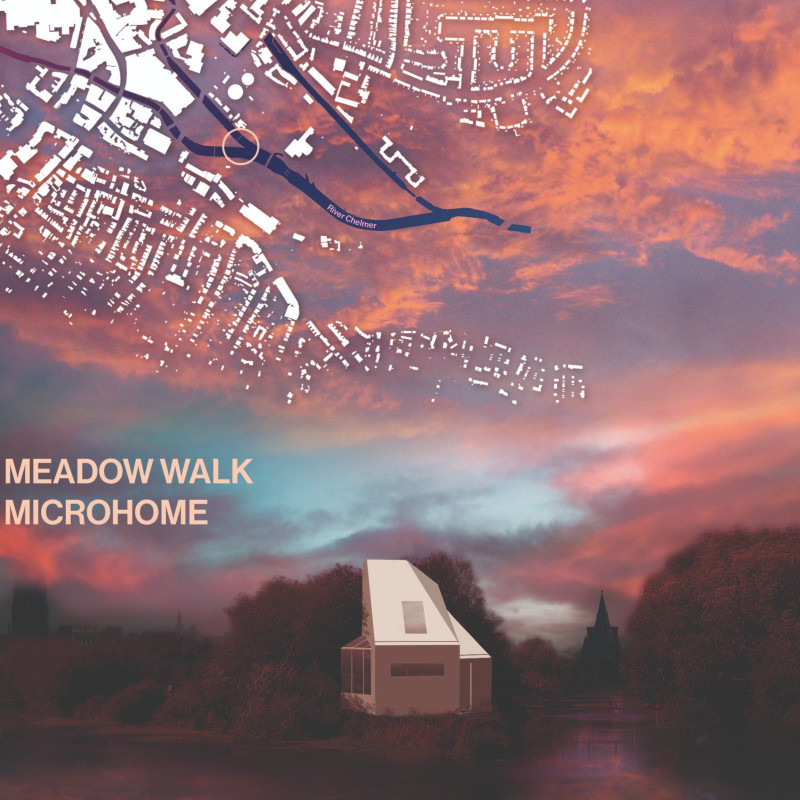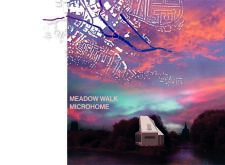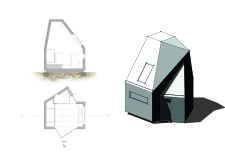5 key facts about this project
At its core, the microhome represents a shift towards minimalism in residential architecture, demonstrating how a smaller footprint can effectively meet the essential requirements of a household. The design prioritizes not only livability but also resource conservation, making it a relevant case study for sustainable development in residential architecture. The microhome functions as a versatile living space, accommodating both individual residents and small families. Its adaptable layout is designed to maximize usability, allowing occupants to enjoy a comfortable lifestyle without unnecessary excess.
Important parts of the design include a unique, angular façade that captures attention with its modern aesthetics while respecting traditional architectural elements. The pitched roof design facilitates effective rainwater drainage while also contributing to overall energy efficiency. Inside, the open floor plan fosters a sense of spaciousness and flexibility, enabling inhabitants to customize the use of space according to their needs. This approach to spatial organization is indicative of a growing trend in architecture, where the focus is placed on multifunctional areas that can serve various purposes throughout the day.
The selection of materials is another key aspect of the project and plays a significant role in its environmental responsibility. Wood is prevalent throughout the microhome, not only as a structural element but also as a finishing material that adds warmth and character. Utilizing sustainable wood options reflects a commitment to sourcing environmentally friendly materials. The inclusion of metal cladding as an exterior finish provides durability and weather resistance, ensuring the home can withstand the elements while maintaining a sleek, modern appearance. Large glass windows and doors are thoughtfully integrated to invite natural light, creating an airy ambiance that blurs the boundaries between indoor and outdoor spaces, seamlessly connecting the inhabitants with nature.
For anyone interested in sustainable architecture and micro-living solutions, the Meadow Walk Microhome serves as an inspiring example of how design can effectively address pressing issues in residential development. Its location near the River Cherwell enhances its ecological engagement, fostering a sense of community and promoting outdoor living. This is particularly pertinent in an era where urban density continues to rise, and innovative housing solutions are increasingly necessary to accommodate population growth without sacrificing quality of life.
The architectural ideas represented in this project illustrate the potential for compact living spaces to offer meaningful and enriching experiences. By embracing minimalism without compromising comfort or functionality, the Meadow Walk Microhome invites a re-examination of what modern living can entail. The project’s design approach emphasizes the importance of sustainability in architecture, serving as a model for future residential developments.
Explore the project presentation to gain deeper insights into the architectural plans, sections, and designs that bring the Meadow Walk Microhome to life, and discover how design principles can transform contemporary living.
























